What is hip dysplasia?
Hip dysplasia, also known as developmental dysplasia of the hip (DDH) and acetabular dysplasia, is a condition where the hip socket doesn’t fully cover the ball of the femur, causing the hip to partially or completely dislocate. This poor fit (or incongruency) can also lead to premature damage to the cartilage, pain, instability and stiffness.
Hip dysplasia can be present at birth or develop throughout childhood and adolescence. Hip dysplasia is a relatively common condition, affecting about 1 in every 1,000 infants born in the US each year, and is more common in girls. The good news is most babies have no long-term complications if their hip dysplasia is treated when they’re younger than 6 months. Sometimes, older children and adults can develop hip dysplasia, with symptoms such as pain or instability occurring later in life.
Hip dysplasia symptoms
Symptoms of hip dysplasia differ by age. In infants, one leg may appear longer than the other, or a limp may develop once the child starts walking. One hip may also feel less flexible during diaper changes. In teenagers and young adults, hip dysplasia can lead to pain, limping, giving way or clicking. Further development of arthritis or a labral tear can cause groin pain during activity and a feeling of hip instability.
When to see a doctor
All infants are screened for DDH, but parents should discuss symptoms with their baby’s pediatrician at a well-baby checkup.
You should also visit a doctor promptly if symptoms of hip dysplasia cause:
- Limited ability to move a joint or bear weight on a leg
- Severe hip pain that doesn’t improve after a few days
- Visible changes or deformity to the structure of the hip joint
- Any new onset of a limp, hip pain, or feelings of instability in a child or adolescent
What causes hip dysplasia?
The exact causes of hip dysplasia aren’t clear. There are genetic factors, environmental factors, and developmental reasons that can increase the risk.
If the ball of the developing femur isn’t positioned firmly into the hip socket, the socket will not completely form around it. Instead, the socket will become too shallow to fully support the femoral head. As the fetus grows larger and more tightly positioned in the uterus before birth, the shallow hip socket can force the femoral head out of position.
Hip dysplasia risk factors
Hip dysplasia tends to run in families, but any baby can be born with the condition, and anyone can develop it. Though hip dysplasia can affect either hip, it is more common to have it bilaterally with differing severity.
Risk factors for hip dysplasia include:
- First-born babies
- Larger infants: Babies who are larger and more crowded in the uterus may be at higher risk.
- Sex: Girls are two to four times more likely to have hip dysplasia than boys.
- Birth position: Babies born breech (feet first) are more likely to develop hip dysplasia.
- Family history: Having a parent or sibling with hip dysplasia increases the risk of a child developing it.
- Swaddling: Improper swaddling that keeps the hips extended and together can increase the risk of hip dysplasia.
Complications of hip dysplasia
People with hip dysplasia, both adults and infants, are at a higher risk of hip dislocation and early joint degeneration. While dislocations usually happen due to serious trauma, hip dysplasia weakens the hip joint, increasing the risk of partial dislocation that develops over time, known as gradual subluxation. It can also cause looser muscles and ligaments around the hip.
Other hip dysplasia complications can include:
- Hip labral tears: As you age, hip dysplasia can damage the labrum, the soft cartilage that forms a rim protecting the hip socket.
- Osteoarthritis: Concentrated pressure and friction on the hip socket may damage or wear down the cartilage in the hip joint.
- Recurring hip pain: The poor fit of your hip joint can lead to pain and instability.
How is hip dysplasia diagnosed?
In addition to a check right after birth, infants are often screened for hip dysplasia at all their well-child visits. For higher-risk infants, an ultrasound is often performed. Diagnosing hip dysplasia in adolescents and adults requires a combination of a physical exam and imaging tests. Tell your doctor when you first noticed the hip pain and if any activity makes it worse.
-
Medical history and exam
Your doctor will take your medical history and whether you had hip dysplasia during childhood. They may also ask if you’ve had any accidents that affected your hip and whether you currently experience pain or functional problems with your hip.
As part of the physical exam, your provider will ask you to move your hip through a range of motion and examine you for a leg-length discrepancy or a tilted pelvis. They’ll ask you to walk so they can observe your gait and check for limping.
-
Imaging tests
Diagnostic imaging tests can help confirm hip dysplasia. Tests and scans help your doctor locate abnormalities and signs of damage in the hip joint and identify the source of your pain.
- Ultrasound: Ultrasounds are used on infants suspected of having hip dysplasia. They use sound waves to produce images of the hip at certain angles.
- X-rays: X-rays taken from a specific angle can reveal a shallow hip joint, and they are often used for teens and adults.
- CT and MRI scan: A CT and MRI can show further detailed anatomy and soft tissues in the hip joint and may be used in adults suspected of having hip dysplasia.
Hip dysplasia treatment
Several treatments for hip dysplasia can relieve discomfort and protect the hip joint. Early diagnosis and treatment can lead to options that preserve hip function so you can lead an active life. Your doctors will recommend a treatment depending on your age and the extent of your hip damage.
Infants are usually treated for a few months with a soft brace, such as a Pavlik harness, to help keep their joints aligned as they grow. If your child starts treatment when they are younger than 6 months old, this may be all they need to correct hip dysplasia.
Lifestyle changes
For adults with hip dysplasia that hasn’t damaged bone or cartilage, lifestyle changes may help protect your hip joint.
- Choose low-impact sports, such as cycling or swimming.
- Lose weight to relieve pressure on the joint.
- Consider physical therapy, which may help protect joint function and increase range of motion.
Medication
Your doctor may recommend medications to help you find relief from the pain of hip dysplasia and delay or avoid surgery. Although these medications can’t fix hip dysplasia or address the cause of your condition, they can relieve your pain, allowing you to continue a more active lifestyle.
- Corticosteroids: These injected medications may reduce inflammation around the hip joint.
- Nonsteroidal anti-inflammatory drugs (NSAIDs): These over-the-counter medications can reduce pain and inflammation.
Surgery
When nonsurgical treatments are no longer effective, or your hip dysplasia is severe, surgery might be the best treatment option. The type of surgery will depend on your age, activity level and severity of hip damage.
Hip dysplasia surgeries include:
- Periacetabular Osteotomy: A surgeon realigns and reshapes the existing bones in your joint.
In some instances, it may be necessary to replace the hip joint. If your hip joint has become severely damaged, a doctor may recommend hip replacement surgery, in which a surgeon replaces your natural ball and socket with a metal and plastic artificial joint.
Locations
We offer several locations for your care, including orthopedic specialty centers in North and Central Texas.
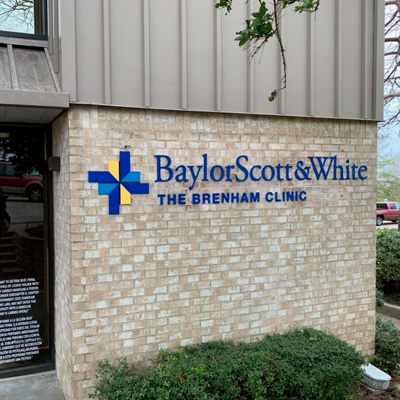
Baylor Scott & White - The Brenham Clinic
600 N Park St , Brenham, TX, 77833
- Monday: 7:30 am - 5:00 pm
- Tuesday: 7:30 am - 5:00 pm
- Wednesday: 7:30 am - 5:00 pm
- Thursday: 7:30 am - 5:00 pm
- Friday: 7:30 am - 5:00 pm
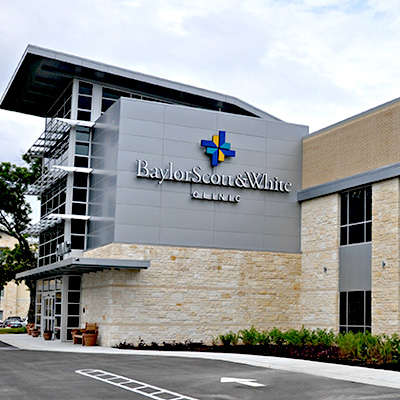
Baylor Scott & White Clinic - Cedar Park
910 E Whitestone Blvd , Cedar Park, TX, 78613
- Monday: 8:00 am - 5:00 pm
- Tuesday: 8:00 am - 5:00 pm
- Wednesday: 8:00 am - 5:00 pm
- Thursday: 8:00 am - 5:00 pm
- Friday: 8:00 am - 5:00 pm
- Monday: 7:00 am - 5:00 pm
- Tuesday: 7:00 am - 5:00 pm
- Wednesday: 7:00 am - 5:00 pm
- Thursday: 7:00 am - 5:00 pm
- Friday: 7:00 am - 5:00 pm
- Saturday: 9:00 am - 2:00 pm

Baylor Scott & White Clinic - College Station Rock Prairie
800 Scott and White Dr , College Station, TX, 77845
- Monday: 7:30 am - 5:00 pm
- Tuesday: 7:30 am - 5:00 pm
- Wednesday: 7:30 am - 5:00 pm
- Thursday: 7:30 am - 5:00 pm
- Friday: 7:30 am - 5:00 pm

Baylor Scott & White Clinic - Georgetown
4945 Williams Dr , Georgetown, TX, 78633
- Monday: 7:30 am - 5:00 pm
- Tuesday: 7:30 am - 5:00 pm
- Wednesday: 7:30 am - 5:00 pm
- Thursday: 7:30 am - 5:00 pm
- Friday: 7:30 am - 5:00 pm
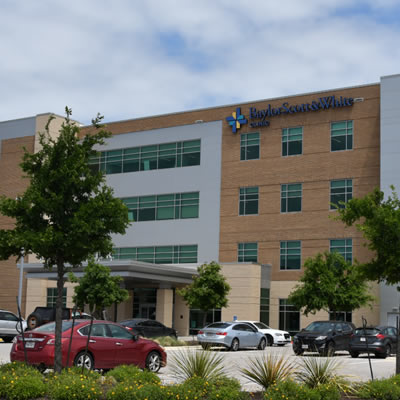
Baylor Scott & White Clinic - Round Rock 300 University
300A University Blvd , Round Rock, TX, 78665
- Monday: 8:00 am - 5:00 pm
- Tuesday: 8:00 am - 5:00 pm
- Wednesday: 8:00 am - 5:00 pm
- Thursday: 8:00 am - 5:00 pm
- Friday: 8:00 am - 5:00 pm

Baylor Scott & White Greater Dallas Orthopaedics - Irving
2001 N MacArthur Blvd Ste 630, Irving, TX, 75061

Baylor Scott & White Hip Preservation Center - McKinney
5220 W University Dr Ste 220, McKinney, TX, 75071
- Monday: 8:00 am - 4:00 pm
- Tuesday: 8:00 am - 4:00 pm
- Wednesday: 8:00 am - 4:00 pm
- Thursday: 8:00 am - 4:00 pm
- Friday: 8:00 am - 12:00 pm

Baylor Scott & White Medical Center - Austin
5245 W US Hwy 290 Service Rd , Austin, TX, 78735

Baylor Scott & White Medical Center - Brenham
700 Medical Pkwy , Brenham, TX, 77833

Baylor Scott & White Medical Center - Buda
5330 Overpass Rd , Buda, TX, 78610

Baylor Scott & White Medical Center - Centennial
12505 Lebanon Rd , Frisco, TX, 75035

Baylor Scott & White Medical Center - College Station
700 Scott and White Dr , College Station, TX, 77845

Baylor Scott & White Medical Center - Grapevine
1650 W College St , Grapevine, TX, 76051

Baylor Scott & White Medical Center - Hillcrest
100 Hillcrest Medical Blvd , Waco, TX, 76712

Baylor Scott & White Medical Center - Lake Pointe
6800 Scenic Dr , Rowlett, TX, 75088

Baylor Scott & White Medical Center - Lakeway
100 Medical Pkwy , Lakeway, TX, 78738

Baylor Scott & White Medical Center - Marble Falls
810 W State Hwy 71 , Marble Falls, TX, 78654

Baylor Scott & White Medical Center - McKinney
5252 W University Dr Highway 380 at Lake Forest Drive, McKinney, TX, 75071
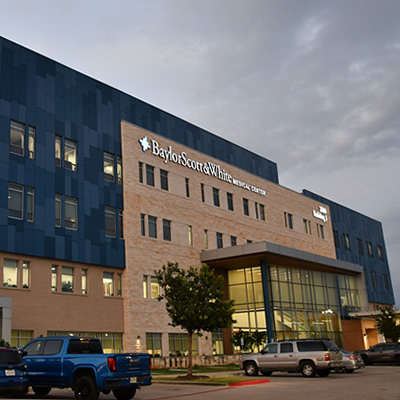
Baylor Scott & White Medical Center - Pflugerville (Building 1)
2600 E Pflugerville Pkwy Bldg 1, Ste 100, Pflugerville, TX, 78660

Baylor Scott & White Medical Center - Plano
4700 Alliance Blvd , Plano, TX, 75093

Baylor Scott & White Medical Center - Round Rock
300 University Blvd , Round Rock, TX, 78665

Baylor Scott & White Medical Center - Sunnyvale
231 S Collins Rd , Sunnyvale, TX, 75182
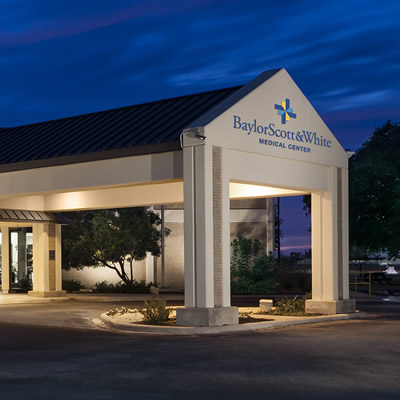
Baylor Scott & White Medical Center - Taylor
305 Mallard Ln , Taylor, TX, 76574

Baylor Scott & White Medical Center - Temple
2401 S 31st St , Temple, TX, 76508

Baylor Scott & White Orthopaedic Trauma Associates - Dallas
3409 Worth St Ste 300, Dallas, TX, 75246
- Monday: 8:00 am - 4:30 pm
- Tuesday: 8:00 am - 4:30 pm
- Wednesday: 8:00 am - 4:30 pm
- Thursday: 8:00 am - 4:30 pm
- Friday: 8:00 am - 2:00 pm

Baylor Scott & White Orthopaedic Trauma Associates - Grapevine
1631 Lancaster Dr Ste 230, Grapevine, TX, 76051
- Monday: 8:00 am - 4:30 pm
- Tuesday: 8:00 am - 4:30 pm
- Wednesday: 8:00 am - 4:30 pm
- Thursday: 8:00 am - 4:30 pm
- Friday: 8:00 am - 2:00 pm

Baylor Scott & White Orthopaedic Trauma Associates - McKinney
5220 W University Dr POB II, Ste 220, McKinney, TX, 75071
- Monday: 8:00 am - 4:30 pm
- Tuesday: 8:00 am - 4:30 pm
- Wednesday: 8:00 am - 4:30 pm
- Thursday: 8:00 am - 4:30 pm
- Friday: 8:00 am - 2:00 pm

Baylor Scott & White Orthopedic Associates of Dallas
3900 Junius St Ste 500, Dallas, TX, 75246
- Monday: 8:00 am - 5:00 pm
- Tuesday: 8:00 am - 5:00 pm
- Wednesday: 8:00 am - 5:00 pm
- Thursday: 8:00 am - 5:00 pm
- Friday: 8:00 am - 5:00 pm
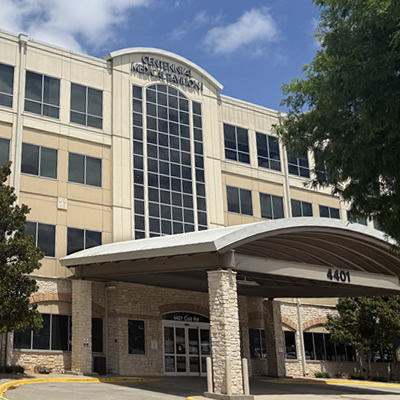
Baylor Scott & White Orthopedic Associates of Dallas - Centennial
4401 Coit Rd Ste 203, Frisco, TX, 75035
- Monday: 8:00 am - 5:00 pm
- Tuesday: 8:00 am - 5:00 pm
- Wednesday: 8:00 am - 5:00 pm
- Thursday: 8:00 am - 5:00 pm
- Friday: 8:00 am - 4:00 pm

Baylor Scott & White Orthopedic Associates of Dallas - Flower Mound
1110 Parker Sq , Flower Mound, TX, 75028
- Monday: 8:00 am - 5:00 pm
- Tuesday: 8:00 am - 5:00 pm
- Wednesday: 8:00 am - 5:00 pm
- Thursday: 8:00 am - 5:00 pm
- Friday: 8:00 am - 5:00 pm

Baylor Scott & White Orthopedic Associates of Dallas - Grapevine
1631 Lancaster Dr Ste 230, Grapevine, TX, 76051
- Monday: 8:00 am - 5:00 pm
- Tuesday: 8:00 am - 5:00 pm
- Wednesday: 8:00 am - 5:00 pm
- Thursday: 8:00 am - 5:00 pm
- Friday: 8:00 am - 5:00 pm

Baylor Scott & White Orthopedic Associates of Dallas - McKinney
5220 W University Dr POB II, Ste 300, McKinney, TX, 75071
- Monday: 8:00 am - 5:00 pm
- Tuesday: 8:00 am - 5:00 pm
- Wednesday: 8:00 am - 5:00 pm
- Thursday: 8:00 am - 5:00 pm
- Friday: 8:00 am - 5:00 pm

Baylor Scott & White Orthopedic Associates of Dallas - North Garland
7217 Telecom Pkwy Ste 325, Garland, TX, 75044

Baylor Scott & White Orthopedic Associates of Dallas - Park Cities
9101 N Central Expy Ste 370, Dallas, TX, 75231

Baylor Scott & White Orthopedic Associates of Dallas - Plano
4716 Alliance Blvd Pavilion II, Ste 600, Plano, TX, 75093

Baylor Scott & White Orthopedic Associates of Dallas - Sunnyvale
341 Wheatfield Dr Ste 290, Sunnyvale, TX, 75182

Baylor Scott & White Orthopedic Associates of Dallas at The Star
3800 Gaylord Pkwy Ste 810, Frisco, TX, 75034
- Monday: 8:00 am - 5:00 pm
- Tuesday: 8:00 am - 5:00 pm
- Wednesday: 8:00 am - 5:00 pm
- Thursday: 8:00 am - 5:00 pm
- Friday: 8:00 am - 5:00 pm
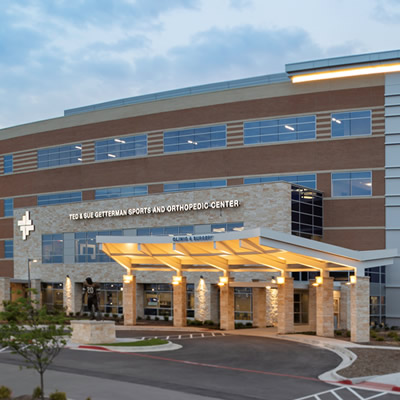
Baylor Scott & White Sports and Orthopedic Center
140 Hillcrest Medical Blvd , Waco, TX, 76712
- Monday: 8:00 am - 5:00 pm
- Tuesday: 8:00 am - 5:00 pm
- Wednesday: 8:00 am - 5:00 pm
- Thursday: 8:00 am - 5:00 pm
- Friday: 8:00 am - 5:00 pm

Baylor Scott & White Sports Medicine and Orthopedic Institute - Mansfield
1776 N US 287 Ste 220, Mansfield, TX, 76063
- Monday: 8:00 am - 4:30 pm
- Tuesday: 8:00 am - 4:30 pm
- Wednesday: 8:00 am - 4:30 pm
- Thursday: 8:00 am - 4:30 pm
- Friday: 8:00 am - 4:30 pm
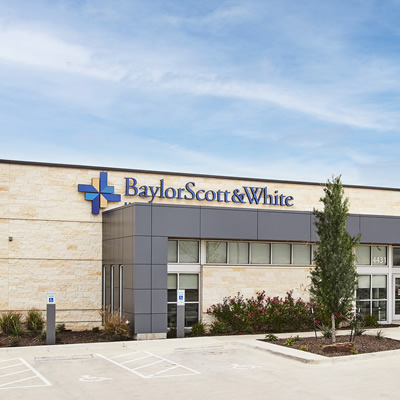
Baylor Scott & White Sports Medicine and Orthopedic Institute - Midway Midlothian
4431 E US Hwy 287 , Midlothian, TX, 76065
- Monday: 8:00 am - 4:30 pm
- Tuesday: 8:00 am - 4:30 pm
- Wednesday: 8:00 am - 4:30 pm
- Thursday: 8:00 am - 4:30 pm
- Friday: 8:00 am - 4:30 pm

Baylor Scott & White Sports Surgery Center at The Star
3800 Gaylord Pkwy Ste 410, Frisco, TX, 75034
- Monday: 6:00 am - 5:00 pm
- Tuesday: 6:00 am - 5:00 pm
- Wednesday: 6:00 am - 5:00 pm
- Thursday: 6:00 am - 5:00 pm
- Friday: 6:00 am - 5:00 pm
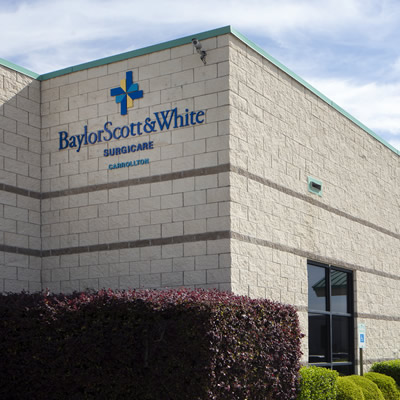
Baylor Scott & White Surgicare - Carrollton
4780 N Josey Ln , Carrollton, TX, 75010
- Monday: 6:00 am - 5:00 pm
- Tuesday: 6:00 am - 5:00 pm
- Wednesday: 6:00 am - 5:00 pm
- Thursday: 6:00 am - 5:00 pm
- Friday: 6:00 am - 5:00 pm

Baylor University Medical Center, part of Baylor Scott & White Health
3500 Gaston Ave , Dallas, TX, 75246
Frequently asked questions
-
Is hip dysplasia genetic?
Yes, hip dysplasia can be passed from parents to children. But genetics isn’t the only risk factor. Girls, babies born in the breech position and babies swaddled tightly are at higher risk.
-
How can you prevent hip dysplasia?
Because most people with hip dysplasia are born with it, it usually can’t be prevented. Speak with your OBGYN about ways to protect your child’s hips or treat hip dysplasia once your baby is born.
-
How do you treat hip dysplasia?
Treatment for hip dysplasia depends on the age and the severity of the condition. Babies are usually treated with a soft brace for a few months. In adults, lifestyle changes, medication or in some instances, surgery may be utilized to treat hip dysplasia.
-
Is hip dysplasia painful?
Yes, hip dysplasia can be painful, especially during physical activity.
-
How common is hip dysplasia in babies?
Hip dysplasia is a common condition that affects about 1 in 1,000 newborns in the US.

